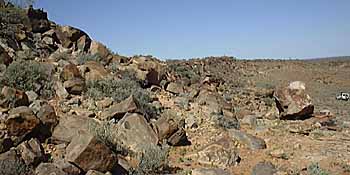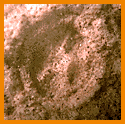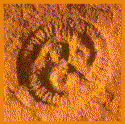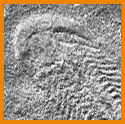Localities of the Vendian:
Ediacara Hills, Australia

 |
In 1946, an Australian mining geologist named Reginald C. Sprigg was exploring a range of mountains north of the city of Adelaide, Australia, known as the Ediacara Hills. Serendipitously, he found fossilized imprints of what were apparently soft-bodied organisms, preserved mostly on the undersides of slabs of quartzite and sandstone. Most were round, disc-shaped forms that Sprigg dubbed "medusoids" from their seeming similarity to jellyfish. Others, however, resembled worms, arthropods, or even stranger things.
Initially, Sprigg thought that these fossils might be Cambrian in age, but later work established that these fossils are in fact late Precambrian. These were not the first Precambrian soft- bodied fossils to be found and described — scattered reports of them had appeared in the scientific literature as far back as the mid- nineteenth century. However, it was the first diverse and well- preserved assemblage of such fossils to be studied in detail, and it helped spark a surge of interest in Precambrian paleontology. The Ediacara Hills gave a name to the entire "Ediacara biota" of the late Precambrian. Appropriately, the name "Ediacara" comes from an Aboriginal language expression meaning "veinlike spring of water" — the "spring," perhaps, from which complex animals have arisen.
 |
 |
 |
| Fossils from the Ediacara Hills: On the left is Arkarua, a small disc-shaped animal that may be the oldest echinoderm. At center is an unusual disc-shaped form with three-part (triradial) symmetry. Named Tribrachidium heraldicum, its affinities are still mysterious, although distant relationships have been proposed with either the Cnidaria or the Echinodermata. On the right is the fossil Spriggina, a possible relative of the arthropods. | ||
Specimens collected from the Ediacara Hills are almost all housed in the South Australian Museum.
 |
UCMP Special Exhibit: Vendian Animals More pictures and information about Ediacaran animals is available in our page "Learning about Vendian Animals." |
Photos of Arkarua and the Ediacara site by Lisa-ann Gershwin
